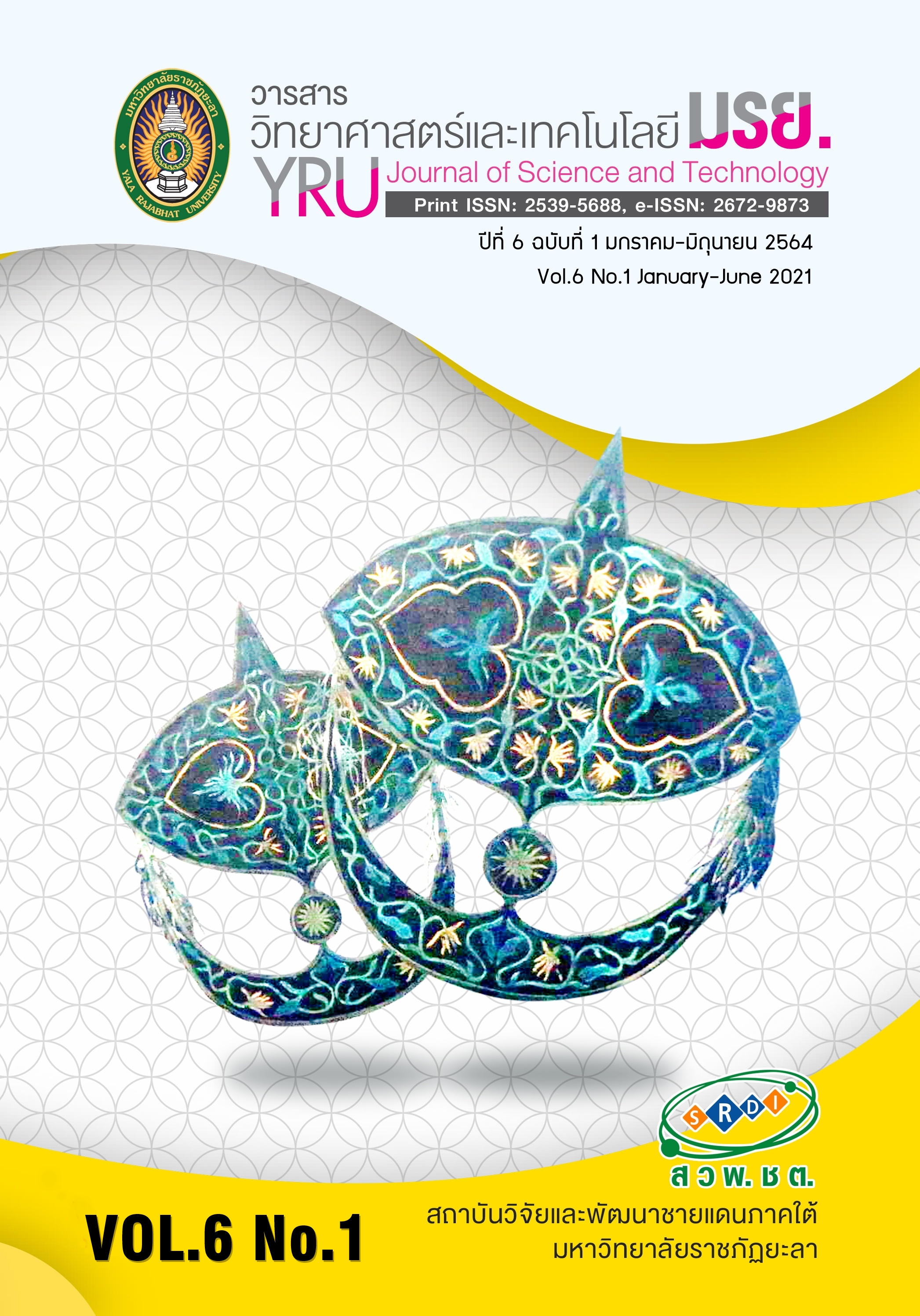Changes of Germination and Seedling Growth of Soybean after Seed Coating with Microbial Inoculant Bacillus thuringiensis and Beauveria bassiana
Main Article Content
Abstract
Chiang Mai 60 (CM 60) and Sor Jor 5 (SJ 5) are two popular types of soybeans grown among farmers since they have long been extension seeds. The seeds are prone to being destroyed by diseases and insects during the cultivation phase, harvesting phase, and seed storage phase. This experiment aims to study the results of coating seeds with Bacillus thuringiensis formula 4 (MMO4) and Beauveria bassiana formula 5 (MMO5) in different ratios to observe the changes in germination and growth of SJ 5 soybean seedlings. The experiment was divided into eight groups which are uncoated seeds T1), seeds coated with Carboxymethyl cellulose T2), seeds coated with 0.1-0.3 ml. of MMO4, respectively T3-T5), seeds coated with 0.1-0.3 ml. of MMO5, respectively T6-T8). The experiment results are as follows. Seeds coated with Carboxymethyl cellulose and seeds coated with 0.1 ml. and 0.2 ml. of MMO5 had better radical emergence compared to uncoated seeds. Additionally, seeds coated with all methods had better germination compared to uncoated seeds. When tested under greenhouse conditions, seeds coated with all ratios of MMO5 had grown into seedlings with a longer shoot length and total seedling length compared to uncoated seeds tested under laboratory condition. At the same time, seeds coated with all ratios of MMO5 had grown into seedlings with a longer shoot length compared to uncoated seeds when tested under greenhouse condition. As a result, 0.1 ml. of MMO5 is a recommended ratio to coat soybean seeds since it is the most cost-effective and has the best effect on the soybean seed quality.
Article Details

This work is licensed under a Creative Commons Attribution-NonCommercial-NoDerivatives 4.0 International License.
บทความ ข้อมูล เนื้อหา รูปภาพ ฯลฯ ที่ได้รับการเผยแพร่ในวารสารวิทยาศาสตร์และเทคโนโลยี มรย. นี้ ถือเป็นลิขสิทธิ์ของวารสารวิทยาศาสตร์และเทคโนโลยี มรย. หากบุคคลหรือหน่วยงานใดต้องการนำทั้งหมดหรือส่วนหนึ่งส่วนใดไปเผยแพร่ต่อหรือกระทำการใดๆ จะต้องได้รับอนุญาตเป็นลายลักษณ์อักษรจากวารสารวิทยาศาสตร์และเทคโนโลยี มรย. ก่อนเท่านั้น
References
Agricultural Research Development Agency. (2016). Maize, Soybean, Mung Bean and Peanut, Direction of Thai Economic Crops in Asean. Bangkok: Pornsup Printing Co., Ltd. (in Thai).
Backer, R., Rokem, J. S., Ilangumaran, G., Lamont, J., Praslickova, D., Ricci, E., & Smith, D. L. (2018). Plant Growth-Promoting Rhizobacteria Context, Mechanisms of Action, and Roadmap to Commercialization of Biostimulants for Sustainable Agriculture. Frontiers in Plant Science, 9, Article ID 1473, 1-17.
Clinic Technology Call Center. (2010). Request Information of Insect Fungi Beauveria Bassiana [Online]. Retrieved October 20, 2010, from: https://bit.ly/2SaZZdD. (in Thai).
Glick, B. R. (2012). Plant Growth-Promoting Bacteria: Mechanisms and Applications. Scientifica, 2012, Article ID 963401, 1-15.
Institute of Product Quality and Standardization. (2020). Distribution of Biological Products (Microbes) [Online]. Retrieved February 2, 2020, from: http://www.iqs.mju.ac.th. (in Thai).
ISTA (International Seed Testing Association). (2017). International Rules for Seed Testing, Edition 2017. Bassersdorf: International Seed Testing Association.
Kangsopa, J. (2019). Seed Coating. Journal of Agricultural Production, 1(2), 63-76. (in Thai).
Kesan, J. P. (2007). Agricultural Biotechnology and Intellectual Property: Seeds of Change. Wallingford, UK: CAB International.
Office of Agricultural Economics (Thailand). (2019). Statistic of Exports [Online]. Retrieved February 2, 2020, from: https://bit.ly/38Uqqem. (in Thai).
Pedrini, S., Merritt, D. J., Stevens, J. & Dixon K. (2017). Seed Coating: Science or Marketing Spin?.Trends
in Plant Science, 22(2), 106-116.
Schillaci, M., Gupta, S., Walker, R., & Roessner, U. (2019). The Role of Plant Growth-Promoting Bacteria in the Growth of Cereals under Abiotic Stresses. pp. 1-21. In: Root Biology-Growth, Physiology, and Functions. London: IntechOpen.
Siri, B. (2015). Seed Conditioning and Seed Enhancements. Khon Kaen: Klungnanawitthaya Priting. (in Thai).
Su, W. F. (2013). Principles of Polymer Design and Synthesis. Berlin, Heidelberg: Springer Berlin Heidelberg.
Zeng, D., Luo, X. & Tu, R. (2012). Application of Bioactive Coatings Based on Chitosan for Soybean Seed Protection. International Journal of Carbohydrate Chemistry, 2012, Article ID 104565, 1-5.


